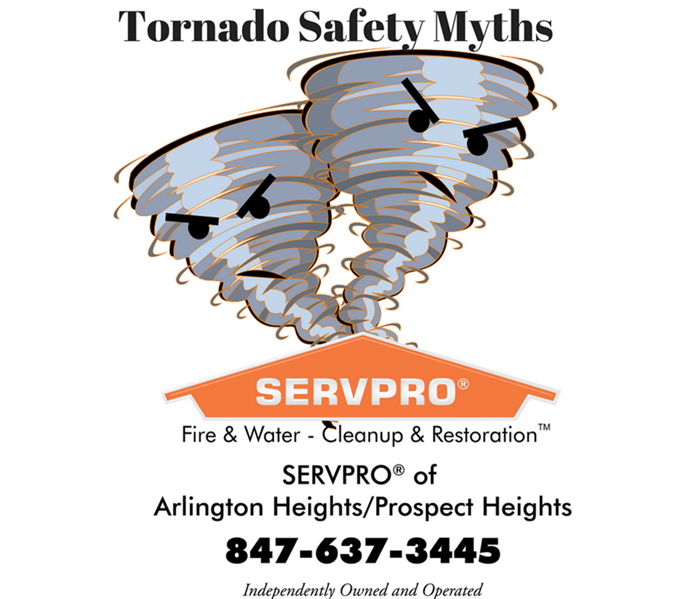Tornado Safety Myths
6/13/2018 (Permalink)
According to the study done by The Weather Channel. Each year in the U.S., 1,200 tornadoes on average kill 60 people, injure 1,500, and cause roughly $400 million in damages, putting long-term average tornado losses on par with hurricanes. With that being said, you need to know the difference between tornado fact and fiction.
- Southwest corner of your home/building/shelter is the safest location - In 1887 John P. Finley wrote a book on his observations of his tornado research. While he published some ground breaking information on tornadoes he also helped created this tornadoes myth. John believed that tornadoes only traveled in a northeast direction and that derby they created would be carried in the direction of its propagation. The 1997 F5 Jarrell tornado is a prime example of his misconceptions since that tornado moved in a south-southwesterly direction. It's recommended that you always seek shelter in the lowest floor of a building, preferably under an I-beam or staircase, regardless of the type of building you're in.
- Open all the windows in your home when a tornado warning is issued - This is an extremely dangerous myth because it takes away critical minutes that could be used to reach shelter. It used to be widely believed that you needed to open your windows during a tornado to equalize pressure and prevent your house from exploding. A violent tornado will only have a 10% drop in pressure which isn't anywhere near enough to cause your home to explode. Ignore your windows and seek shelter immediately when a tornado warning is issued.
- A highway overpass is an excellent tornado shelter - This myth gained huge traction in 1991 when a TV crew survived a tornado unharmed by sheltering under a overpass in El Dorado, KS. This event had nationwide coverage with video of the event and that helped perpetuate this myth to a dangerously high status. The conclusion for scientific evidence from the Oklahoma outbreak in 1999 actual proved that overpasses are actually one of the worst places to seek shelter during a violent tornado; mostly due to the wind tunnel effect that can accelerate flying derby speed even during weak tornadoes.
- You can outrun a tornado via a vehicle - The theory behind this myth is a vehicle can travel faster than the average tornado, but the key phrase is average. There is no way for someone to know the travel and wind speed of a tornado just by looking at it. Plus the flooding, hail, and flying derby from a tornado can put someone in a vehicle in danger. The official directive from the National Weather Service is if you spot a tornado nearby to abandon your vehicle and seek shelter in a nearby building, culvert or ditch.
- A brick or stone building can protect me from a tornado - While a brick or stone building can provide better protection during tornado a violent only can easily turn a brick or stone building into a pile of rubble. It's recommended that you always seek shelter in the lowest floor of a building, preferably under an I-beam or staircase, regardless of the type of building you're in.
- If a tornado isn't coming directly towards me I'm safe - In the past it was common belief that a tornado would only travel in a northeasterly direction. While it's true that most tornadoes will move northeast this is most due to the direction the storm is traveling. Tornadoes are erratic, unpredictable, and can come from any direction.
In the even a tornado strikes, SERVPRO is always here to help!






 24/7 Emergency Service
24/7 Emergency Service
